#it's my drawing toni redemption era
Explore tagged Tumblr posts
Text
3am motivation strikes again

#lunie blabbers#wip#doodles#when the 3am inspiration hits.... it's somethin' ELSE#love how that's a tag already#it's my drawing toni redemption era#i'll fix it up tomorrow.....zzzzzzzz..........goodnight........
17 notes
·
View notes
Text
TV I Liked in 2020
Every year I reflect on the pop culture I enjoyed and put it in some sort of order.
Was there ever a year more unpredictably tailor-made for peak TV than 2020? Lockdowns/quarantines/stay-at-home orders meant a lot more time at home and the occasion to check out new and old favorites. (I recognize that if you’re lucky enough to have kids or roommates or a S.O., your amount of actual downtime may have been wildly different). While the pandemic resulted in production delays and truncated seasons for many shows, the continued streaming-era trends of limited series and 8-13 episode seasons mean that a lot of great and satisfying storytelling still made its way to the screen. As always, I in no way lay any claims to “best-ness” or completeness – this is just a list of the shows that brought me the most joy and escapism in a tough year and therefore might be worth putting on your radar.
10 Favorites
10. The Right Stuff: Season 1 (Disney+)
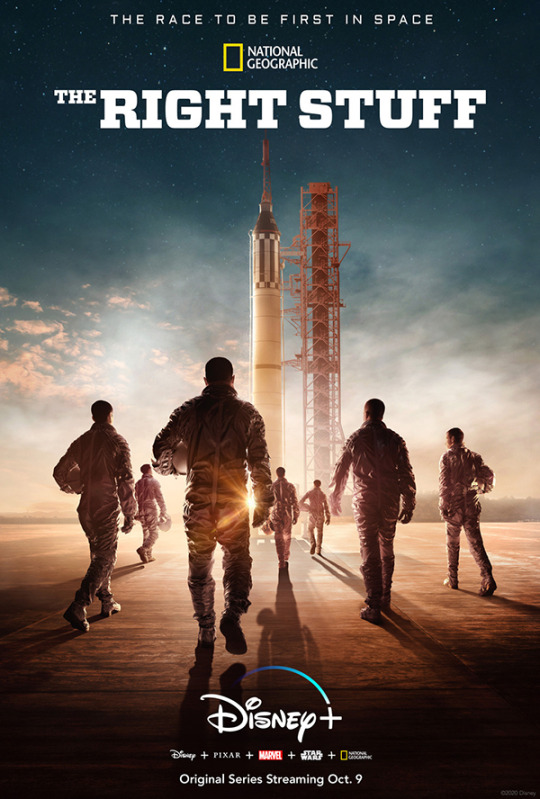
As a space program enthusiast, even I had to wonder, does the world really need another retelling of NASA’s early days? Especially since Tom Wolfe’s book has already been adapted as the riveting and iconoclastic Philip Kaufman film of the same name? While some may disagree, I find that this Disney+ series does justify its existence by focusing more on the relationships of the astronauts and their personal lives than the technical science (which may be partially attributable to budget limitations?). The series is kind of like Mad Men but with NASA instead of advertising (and real people, of course), so if that sounds intriguing, I encourage you to give it a whirl.
9. Fargo: Season 4 (FX)
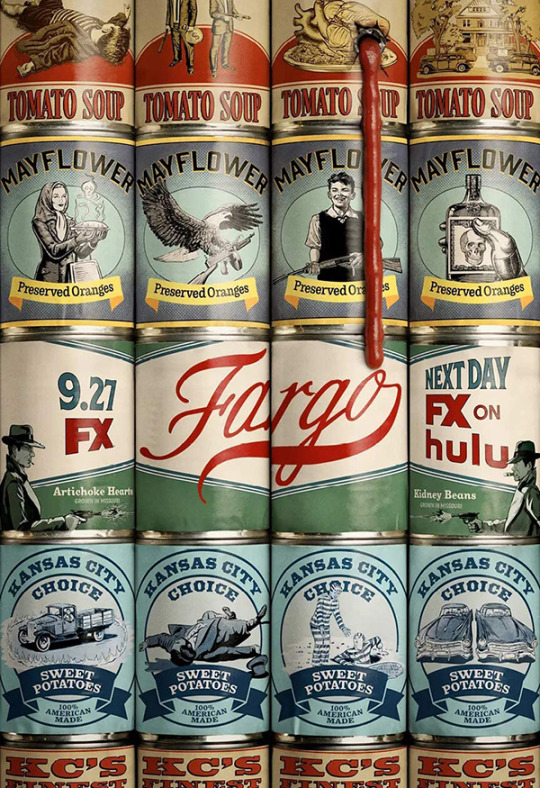
As a big fan of Noah Hawley’s Coen Brothers pastiche/crime anthology series, I was somewhat let down by this latest season. Drawing its influence primarily from the likes of gangster drama Miller’s Crossing – one of the Coens’ least comedic/idiosyncratic efforts – this season is more straightforward than its predecessors and includes a lot of characters and plot-threads that never quite cohere. That said, it is still amongst the year’s most ambitious television with another stacked cast, and the (more-or-less) standalone episode “East/West” is enough to make the season worthwhile.
8. The Last Dance (ESPN)

Ostensibly a 10-episode documentary about the 1990s Chicago Bulls’ sixth and final NBA Championship run, The Last Dance actually broadens that scope to survey the entire history of Michael Jordan and coach Phil Jackson’s careers with the team. Cleverly structured with twin narratives that chart that final season as well as an earlier timeframe, each episode also shifts the spotlight to a different person, which provides focus and variety throughout the series. And frankly, it’s also just an incredible ride to relive the Jordan era and bask in his immeasurable talent and charisma – while also getting a snapshot of his outsized ego and vices (though he had sign-off on everything, so it’s not exactly a warts-and-all telling).
7. The Queen’s Gambit (Netflix)

This miniseries adaptation of the Walter Tevis coming-of-age novel about a chess prodigy and her various addictions is compulsively watchable and avoids the bloat of many other streaming series (both in running time and number of episodes). The 1960s production design is stunning and the performances, including Anya Taylor-Joy in the lead role, are convincing and compelling.
6. The Great: Season 1 (hulu)
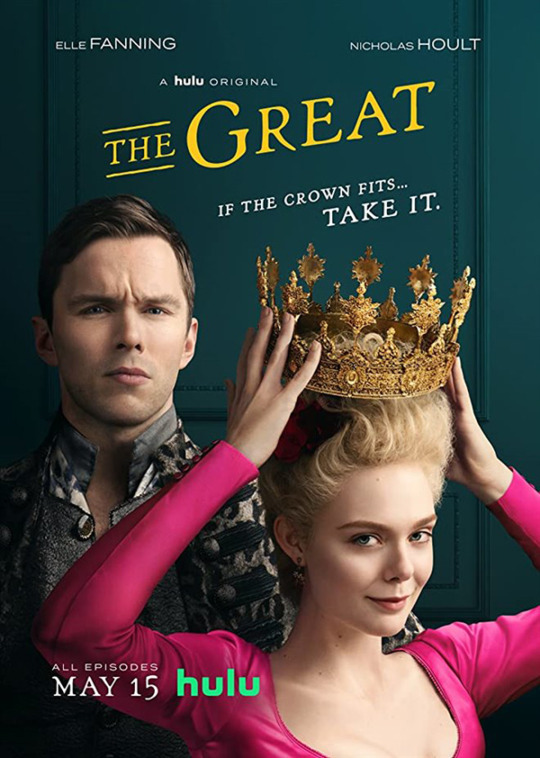
Much like his screenplay for The Favourite, Tony McNamara’s series about Catherine the Great rewrites history with a thoroughly modern and irreverent sensibility (see also: Sofia Coppola’s Marie Antoinette). Elle Fanning brings a winning charm and strength to the title role and Nicholas Hoult is riotously entertaining as her absurdly clueless and ribald husband, Emperor Peter III. Its 10-episodes occasionally tilt into repetitiveness, but when the ride is this fun, why complain? Huzzah!
5. Dispatches From Elsewhere (AMC)
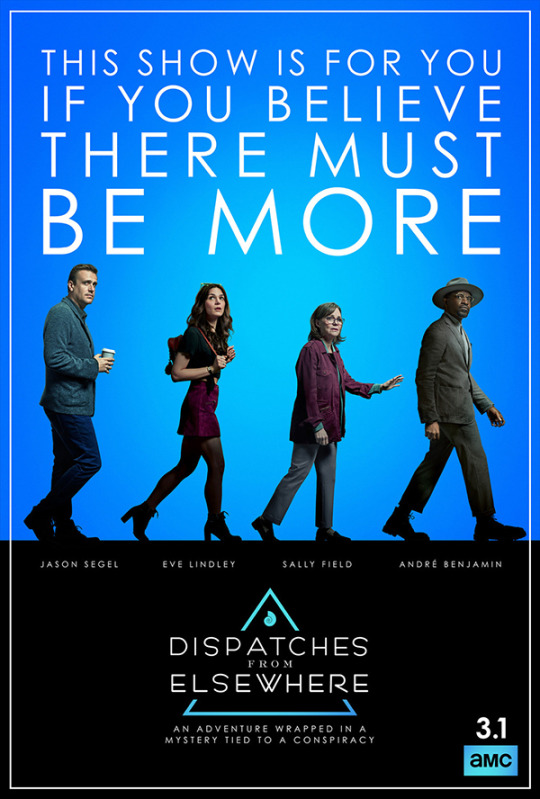
A limited (but possibly anthology-to-be?) series from creator/writer/director/actor Jason Segal, Dispatches From Elsewhere is a beautiful and creative affirmation of life and celebration of humanity. The first 9 episodes form a fulfilling and complete arc, while the tenth branches into fourth wall-breaking meta territory, which may be a bridge too far for some (but is certainly ambitious if nothing else). Either way, it’s a movingly realized portrait of honesty, vulnerability and empathy, and I highly recommend visiting whenever it inevitably makes its way to Netflix, or elsewhere…
4. What We Do in the Shadows: Season 2 (FX)
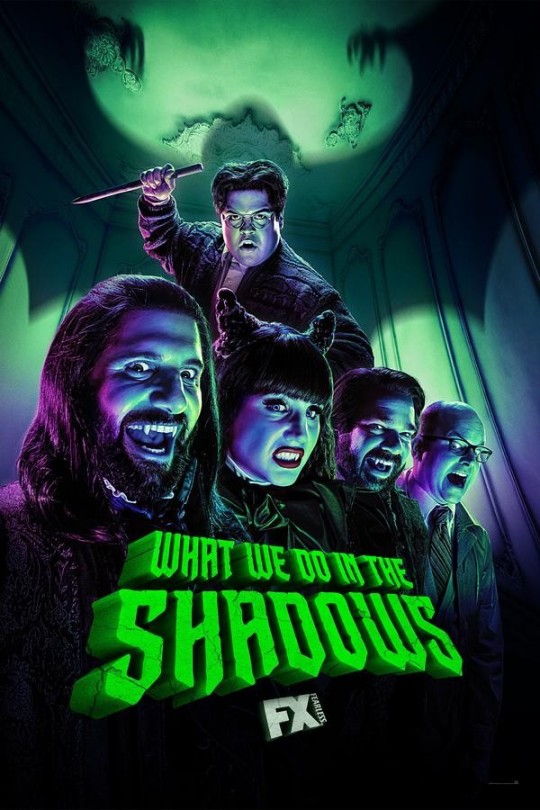
The second season of WWDITS is more self-assured and expansive than the first, extending a premise I loved from its antecedent film – but was skeptical could be sustained – to new and reinvigorated (after)life. Each episode packs plenty of laughs, but for my money, there is no better encapsulation of the series’ potential and Matt Berry’s comic genius than “On The Run,” which guest-stars Mark Hamill and features Laszlo’s alter ego Jackie Daytona, regular human bartender.
3. Ted Lasso: Season 1 (AppleTV+)
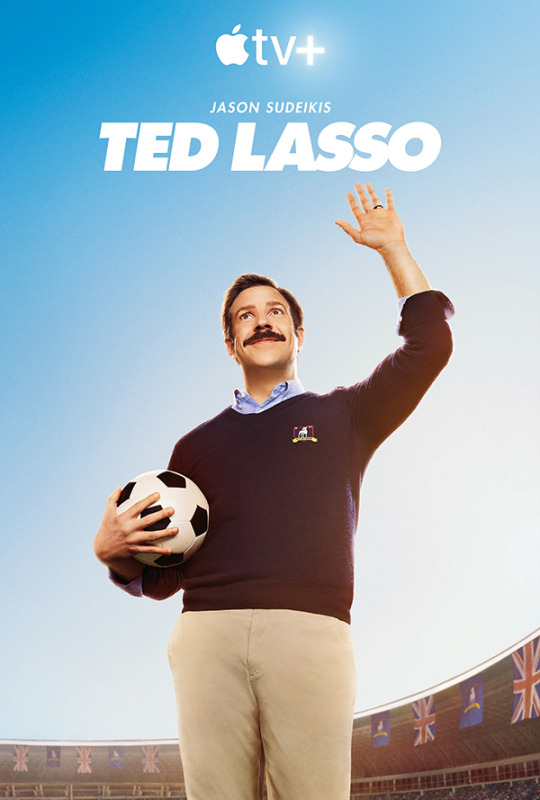
Much more than your average fish-out-of-water comedy, Jason Sudeikis’ Ted Lasso is a brilliant tribute to humaneness, decency, emotional intelligence and good coaching – not just on the field. The fact that its backdrop is English Premier League Soccer is just gravy (even if that’s not necessarily represented 100% proficiently). A true surprise and gem of the year.
2. Mrs. America (hulu)
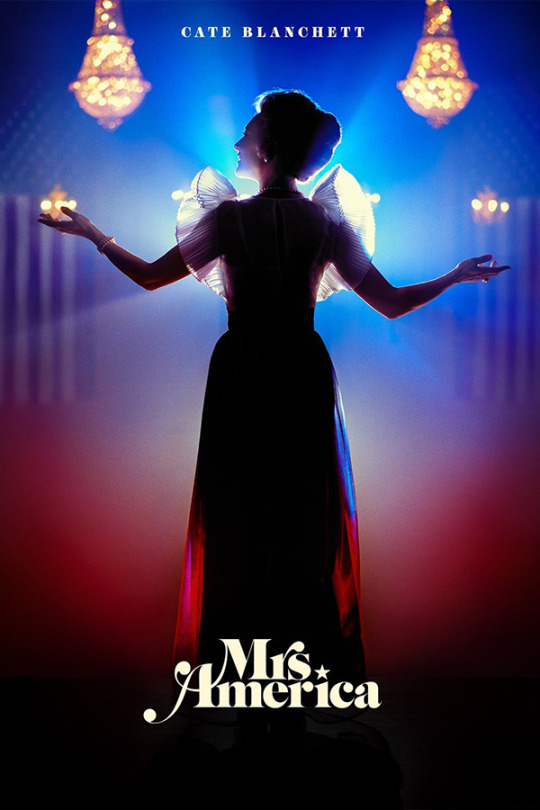
This FX miniseries explores the women’s liberation movement and fight for the Equal Rights Amendment in the 1970s and its opposition by conservative women including Phyllis Schlafly. One of the most ingenious aspects of the series is centering each episode on a different character, which rotates the point of view and helps things from getting same-y. With a slate of directors including Ryan Bowden and Anna Fleck (Half-Nelson, Sugar, Captain Marvel) and an A-List cast including Cate Blanchett, Rose Byrne, Uzo Aduba, Sarah Paulson, Margo Martindale, Tracey Ulman and Elizabeth Banks, its quality is right up there with anything on the big screen. And its message remains (sadly) relevant as ever in our current era.
1. The Good Place: Season 4 (NBC)

It was tempting to omit The Good Place this year or shunt it to a side category since only the final 4 episodes aired in 2020, but that would have been disingenuous. This show is one of my all-time favorites and it ended perfectly. The series finale is a representative mix of absurdist humor and tear-jerking emotion, built on themes of morality, self-improvement, community and humanity. (And this last run of eps also includes a pretty fantastic Timothy Olyphant/Justified quasi-crossover.) Now that the entire series is available to stream on Netflix (or purchase in a nice Blu-ray set), it’s a perfect time to revisit the Good Place, or check it out for the first time if you’ve never had the pleasure.
5 of the Best Things I Caught Up With
Anne With An E (Netflix/CBC)
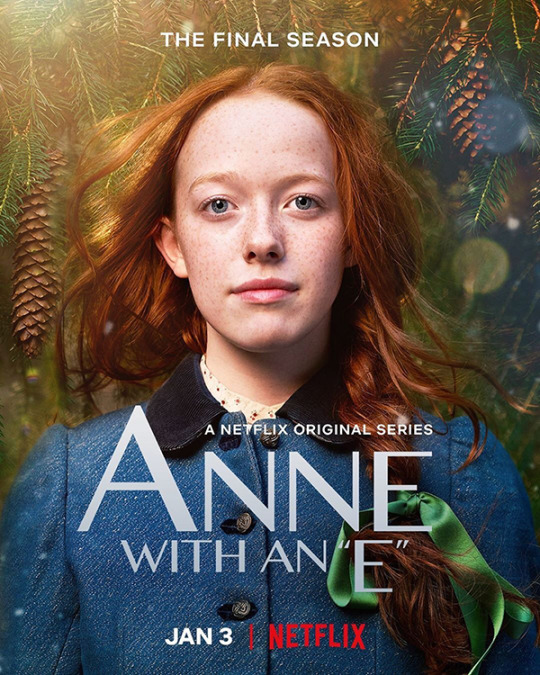
Another example of classic literature I had no prior knowledge of (see also Little Women and Emma), this Netflix/CBC adaptation of Anne of Green Gables was strongly recommended by several friends so I finally gave it a shot. While this is apparently slightly more grown-up than the source material, it’s not overly grimdark or self-serious but rather humane and heartfelt, expanding the story’s scope to include Black and First Nations peoples in early 1800s Canada, among other identities and themes. It has sadly been canceled, but the three seasons that exist are heart-warming and life-affirming storytelling. Fingers crossed that someday we’ll be gifted with a follow-up movie or two to tie up some of the dangling threads.
Better Call Saul (AMC)

I liked Breaking Bad, but I didn’t have much interest in an extended “Breaking Bad Universe,” as much as I appreciate star Bob Odenkirk’s multitalents. Multiple recommendations and lockdown finally provided me the opportunity to catch up on this prequel series and I’m glad I did. Just as expertly plotted and acted as its predecessor, the series follows Jimmy McGill/Saul Goodman on his own journey to disrepute but really makes it hard not to root for his redemption (even as you know that’s not where this story ends).
Joe Pera Talks With You (Adult Swim)
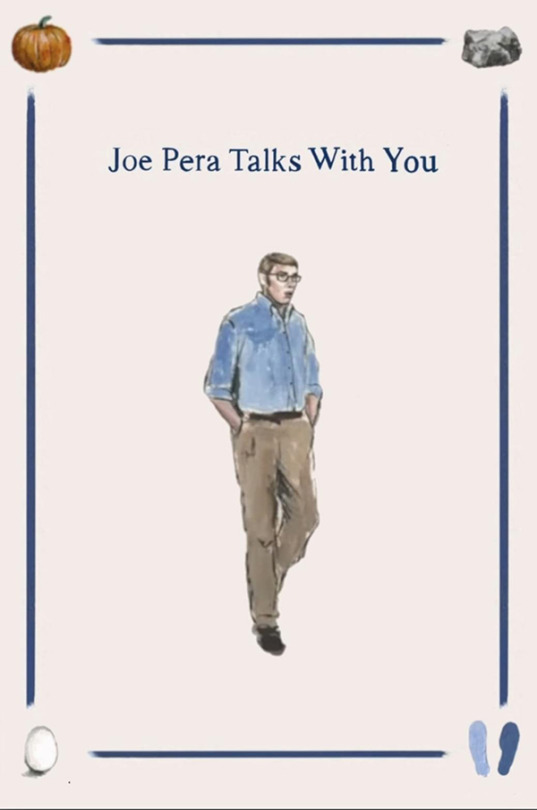
It’s hard to really describe the deadpan and oddly soothing humor of comedian Joe Pera whose persona, in the series at least, combines something like the earnestness of Mr. Rogers with the calm enthusiasm of Bob Ross. Sharing his knowledge on the likes of how to get the best bite out of your breakfast combo, growing a bean arch and this amazing song “Baba O’Reilly” by the Who – have you heard it?!? – Pera provides arch comfort that remains solidly on the side of sincerity. The surprise special he released during lockdown, “Relaxing Old Footage with Joe Pera,” was a true gift in the middle of a strange and isolated year.
The Mandalorian (Disney+)
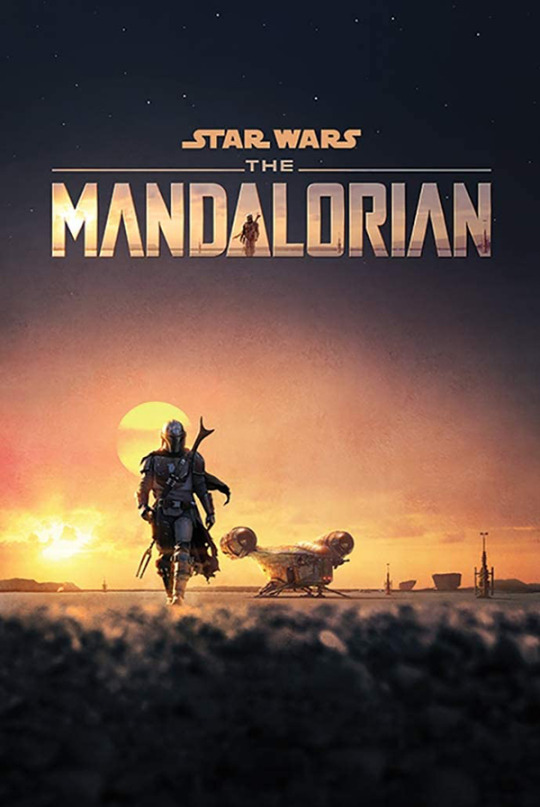
One of the few recent Star Wars properties that lives up to its potential, the adventures of Mando and Grogu is a real thrill-ride of a series with outstanding production values (you definitely want to check out the behind-the-scenes documentary series if you haven’t). I personally prefer the first season, appreciating its Western-influenced vibes and somewhat-more-siloed story. The back half of the second season veers a little too much into fan service and video game-y plotting IMHO but still has several excellent episodes on offer, especially the Timothy Olyphant-infused energy of premiere “The Marshall” and stunning cinematography of “The Jedi.” And, you know, Grogu.
The Tick (Amazon Prime)

I’ve been a fan of the Tick since the character’s Fox cartoon and indie comic book days and also loved the short-lived Patrick Warburton series from 2001. I was skeptical about this Amazon Prime reboot, especially upon seeing the pilot episode’s off-putting costumes. Finally gaining access to Prime this year, I decided to catch up and it gets quite good!, especially in Season 2. First, the costumes are upgraded; second, Peter Serafinowicz’s initially shaky characterization improves; and third, it begins to come into its own identity. The only real issue is yet another premature cancellation for the property, meaning Season 2’s tease of interdimensional alien Thrakkorzog will never be fulfilled. 😢
Bonus! 5 More Honorable Mentions:
City So Real (National Geographic)
The Good Lord Bird (Showtime)
How To with John Wilson: Season 1 (HBO)
Kidding: Season 2 (Showtime)
Unbreakable Kimmy Schmidt: Kimmy Vs The Reverend (Netflix)
11 notes
·
View notes
Text
African American Literature Suggestions from NMU English Department
The English Department at Northern Michigan University has prepared this list of several dozen suggested readings in African American literature, with some materials also addressing Native American history and culture. The first section contains books that will help provide a context for the Black Lives Matter movement. It includes books that will help readers examine their own privilege and act more effectively for the greater good. Following that list is another featuring many African American authors and books. This list is by no means comprehensive, but it does provide readers a place to start. Almost all of these books are readily available in bookstores and public and university libraries.
Northern Michigan University’s English Department offers at least one course on African American literature every semester, at least one course on Native American literature every semester, and at least one additional course on non-western world literatures every semester. Department faculty also incorporate diverse material in many other courses. For more information, contact the department at [email protected]. Nonfiction, primarily addressing current events, along with some classic texts: Joni Adamson, Mei Mei Evans, and Rachel Stein, editors. The Environmental Justice Reader: Politics, Poetics, and Pedagogy. This classic collection of scholarly articles, essays, and interviews explores the links between social inequalities and unequal distribution of environmental risk. Attention is focused on the US context, but authors also consider global impacts. Michelle Alexander, The New Jim Crow: Mass Incarceration in the Age of Colorblindness. A clear-eyed explication of how mass incarceration has created a new racial caste system obscured by the ideology of color-blindness. Essential reading for understanding our criminal justice system in relation to the histories of slavery and segregation. Carol Anderson, White Rage: The Unspoken Truth of Our Racial Divide. A very well-written but disturbing and direct analysis of the history of structural and institutionalized racism in the United States. Gloria Anzaldua, Borderlands/La Frontera: The New Mestiza. Anzaldua writes about the complexity of life on multiple borders, both literal (the border between the US/Mexico) and conceptual (the borders among languages, sexual identity, and gender). Anzaldua also crosses generic borders, moving among essay, story, history, and poetry. James Baldwin, The Fire Next Time. A classic indictment of white supremacy expressed in a searing, prophetic voice that is, simply, unmatched. Ta-Nehisi Coates, Between the World and Me. A combination of personal narrative in the form of the author’s letter to his son, historical analysis, and contemporary reportage. Angela Davis, Are Prisons Obsolete? In this succinct and carefully researched book, Davis exposes the racist and sexist underpinnings of the American prison system. This is a must-read for folks new to conversations about prison (and police) abolition. Robin DiAngelo, What Does It Mean To Be White? The author facilitates white people unpacking their biases around race, privilege, and oppression through a variety of methods and extensive research. Ejeris Dixon and Leah Lakshmi Piepzna-Samarshnha, editors. Beyond Survival: Strategies and Stories From the Transformative Justice Movement. The book attempts to solve problems of violence at a grassroots level in minority communities, without relying on punishment, incarceration, or policing. Frederick Douglass, Narrative of the Life of Frederick Douglass. The most well-known narrative written by one of the most well-known and accomplished enslaved persons in the United States. First published in 1845 when Douglass was approximately 28 years old. W.E.B. DuBois, The Souls of Black Folk. Collection of essays in which Dubois famously prophesied that “the problem of the twentieth century is the problem of the color line.” Henry Louis Gates, Stony the Road: Reconstruction, White Supremacy, and the Rise of Jim Crow. Must reading, a beautifully written, scholarly, and accessible discussion of American history from Reconstruction to the beginnings of the Jim Crow era. Saidiya Hartman, Lose your Mother: A Journey Along the Atlantic Slave Route. In an attempt to locate relatives in Ghana, the author journeyed along the route her ancestors would have taken as they became enslaved in the United States. bell hooks, Black Looks: Race and Representation. A collection of essays that analyze how white supremacy is systemically maintained through, among other activities, popular culture. Harriet Jacobs, Incidents in the Life of a Slave Girl. Narrative of a woman who escaped slavery by hiding in an attic for seven years. This book offers unique insights into the sexually predatory behavior of slave masters. Ibram X. Kendi, Stamped from the Beginning: The Definitive History of Racist Ideas in America. A detailed history not only of racist events in American history, but of the racist thinking that permitted and continues to permit these events. This excellent and readable book traces this thinking from the colonial period through the presidency of Barack Obama. Winona LaDuke, All Our Relations: Native Struggles for Land and Life Any of LaDuke's works belong on this list. This particular text explores the stories of several Indigenous communities as they struggle with environmental and cultural degradation. An incredible resource. Kiese Laymon, Heavy: An American Memoir. An intense book that questions American myths of individual success written by a man who is able to situate his own life within a much larger whole. Cherrie Moraga and Gloria Anzaldua, This Bridge Called My Back: Writings by Radical Women of Color This foundational text brings together work by writers, scholars, and activists such as Audre Lorde, Chrystos, Barbara Smith, Norma Alarcon, Nellie Wong, and many others. The book has been called a manifesto and a call to action and remains just as important and relevant as when it was published nearly 40 years ago. Toni Morrison, The Source of Self-Regard. An invaluable collection of essays and speeches from the only black woman to win a Nobel Prize in literature. Throughout her oeuvre, Morrison calls us to take "personal responsibility for alleviating social harm," an ethic she identified with Martin Luther King. Ersula J. Ore, Lynching: Violence, Rhetoric, and American Identity. Ore scrutinizes the history of lynching in America and contemporary manifestations of lynching, drawing upon the murder of Trayvon Martin and other contemporary manifestations of police brutality. Drawing upon newspapers, official records, and memoirs, as well as critical race theory, Ore outlines the connections between what was said and written, the material practices of lynching in the past, and the forms these rhetorics and practices assume now. Claudia Rankine, Citizen: An American Lyric. A description and discussion of racial aggression and micro-aggression in contemporary America. The book was selected for NMU’s Diversity Common Reader Program in 2016. Layla F. Saad, Me and White Supremacy. The author facilitates white people in unpacking their biases around race, privilege, and oppression, while also helping them understand key critical social justice terminology. Maya Schenwar, Joe Macaré, Alana Yu-lan Price, editors. Who do you Serve, Who Do You Protect? Police Violence and Resistance in the United States. The essays examine "police violence against black, brown, indigenous and other marginalized communities, miscarriages of justice, and failures of token accountability and reform measures." What are alternative measures to keep marginalized communities safe? Ozlem Sensoy and Robin DiAngelo, Is Everyone Really Equal? The authors, in very easy to read and engaging language, facilitate readers in understanding the ---isms (racism, sexism, ableism etc.) and how they intersect, helping readers see their positionality and how privilege and oppression work to perpetuate the status quo. Bryan Stevenson, Just Mercy: A Story of Justice and Redemption. An analysis of America’s criminal justice system by the lawyer who founded the Equal Justice Initiative. While upsetting, the book is also hopeful. Wendy S. Walters, Multiply / Divide: On the American Real and Surreal. In this collection of essays, Walters analyzes the racial psyche of several major American cities, emphasizing the ways bias can endanger entire communities. Booker T. Washington, Up from Slavery. Autobiography of the founder of Tuskegee Institute. Harriet Washington, Medical Apartheid. From the surgical experiments performed on enslaved black women to the contemporary recruitment of prison populations for medical research, Washington illuminates how American medicine has been--and continues to be shaped--by anti-black racism. Malcolm X, The Autobiography of Malcolm X. Autobiography of civil rights leader that traces his evolution as a thinker, speaker, and writer.
If you would like to enhance your knowledge of the rich tradition of African American literature, here are several of the most popular books and authors within that tradition, focused especially on the 20thand 21st centuries. Novels and Short Stories James Baldwin, Go Tell It on the Mountain James Baldwin, Giovanni’s Room Octavia Butler, Parable of the Sower Ralph Ellison, Invisible Man Langston Hughes, The Ways of White Folks Zora Neale Hurston, Their Eyes Were Watching God James Weldon Johnson, The Autobiography of an Ex-Colored Man Nella Larsen, Passing Nella Larsen, Quicksand Toni Morrison, The Bluest Eye Toni Morrison, Beloved Richard Wright, Native Son Drama Lorraine Hansberry, A Raisin in the Sun Ntozake Shange, For Colored Girls Who Have Considered Suicide / When the Rainbow Is Enuf August Wilson, Fences August Wilson, The Piano Lesson Poetry A good place to begin is an anthology, The Vintage Book of African American Poetry, edited by Michael S. Harper and Anthony Walton. It includes work by poets from the 18th century to the present, including Gwendolyn Brooks, Lucille Clifton, Countee Cullen, Rita Dove, Robert Hayden, Langston Hughes, Yusef Komunyakaa, Claude McKay, Phillis Wheatley, and many others. Here are some more recent collections: Reginald Dwayne Betts, Felon Wanda Coleman, Wicked Enchantment: Selected Poems Honorée Fanonne Jeffers, The Age of Phillis Tyehimba Jess, Olio Jamaal May, The Big Book of Exit Strategies Danez Smith, Don’t Call Us Dead
35 notes
·
View notes